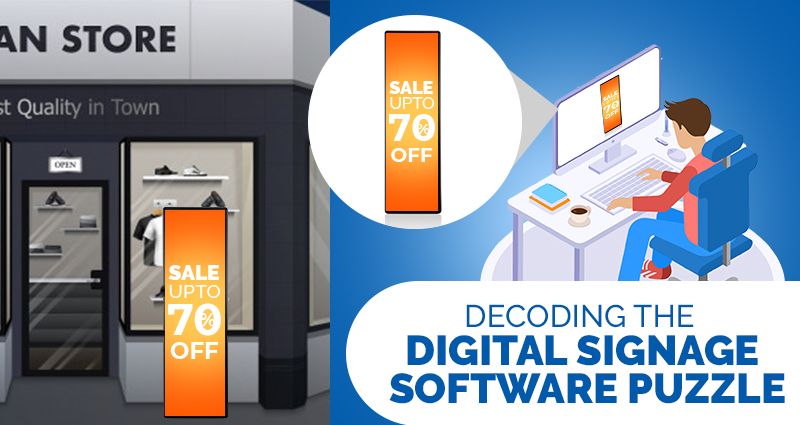
How to Choose LED Screen Rentals?
March 25, 2020
Video Wall & LED Display Trends to Monitor in 2020
April 1, 2020Digital Signage software enables users to manage their dynamic content that is to be displayed to the audience. It also assists the users with scheduling content, organising and maintaining the display screens and diagnosing any form of display errors that occurs remotely. It also provides the flexibility to schedule content and arranges a playlist in advance to be displayed at a specific time and date. From a broader perspective, all digital signage software looks the same but as we go deeper into the specific there are multiple aspects to the software side of the digital signage solution. Let’s explore the specifics of the software component.
Content Management & Distribution Software
Content Management System is the buzz word in the digital signage industry, with every company claiming to provide CMS solutions. Content Management System software comes with a superior user interface that allows the user to manage all aspects of the content from organising to scheduling and uploading to the server. The CMS also comes with the flexibility to create conditions and systems around content playback and distribution to the media player(s). The Content Management and Distribution software can be majorly categorised as cloud-based solutions and on-premise solutions. The major difference lies is server hosting and the degree of control assigned to the user.
Device Management Software
Running a digital signage network has multiple aspects, content management and distribution was one such aspect. When you are planning to deploy multiple screens across various locations, it’s paramount that you can manage them remotely from the convenience of your workplace. The Device Management Software adds value by collecting relevant information on the devices and reporting accurate and actionable data. Some of the major functions of the Digital Signage Software include collecting playback data from media player software, assessing the overall status of the media player; disk space memory usage, network status, etc.
Media Player Software
The primary role of the media player software is to playback the media files using the CPU and GPU to convert data into visual and audio content. Now how this exactly works? Well, there are different media player software which supports different media files using codecs, the role of codecs here is to decode various media files such as images, videos, webpages, etc. into an audio & visual representation form for the LED display screens. Advanced media player software can also store the files internally to given an uninterrupted experience in case of network disruptions.
Osel Technologies is one of the leading solution providers in the industry catering to the holistic needs of Digital Signage solutions





